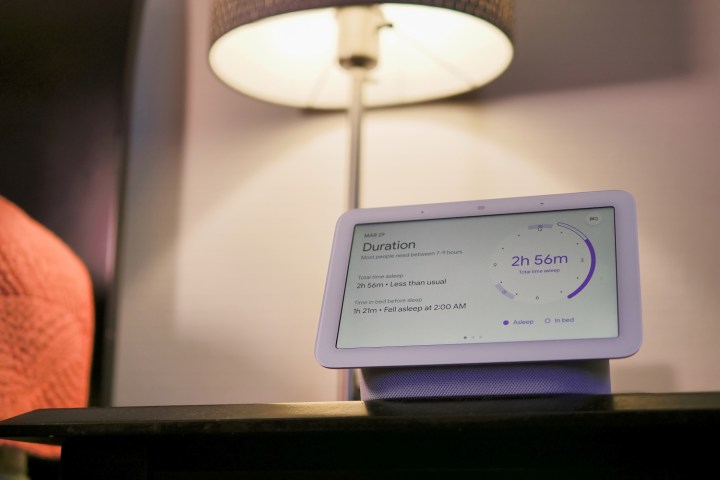It’s a brand-new year, and that means new and exciting innovations in the world of smart home technology. Although no one can say for sure what this year might hold for the ever-expanding industry, we can make a few educated guesses based on the direction it is currently headed, as well as with what we know from CES 2022 so far.
Autonomy and robots
Whether we’re ready for it or not, it’s clear that the biggest names in the smart home world are devoting a not-insignificant amount of time and research to household robots. While the idea of a semi-intelligent robot that can handle the cleaning around the house isn’t unwelcome, it can also be a bit unsettling.
With that in mind, Amazon’s Astro will likely see more widespread adoption, as will the Ring Always Home Cam. In 2020, Sunflower Labs launched The Bee, an autonomous home security drone for your yard. Samsung’s JetBot AI+ might be a robot vacuum, but its built-in home security features make it closer to a home robot than many other devices on the market.

It’s only a matter of time before other companies begin working on products to rival these, especially in the home security space. It might be a long time before a robot can dust your china cabinet, but this year will no doubt bring us closer.
Smarter sensors
Sensors are at the core of the smart home experience. You rely on motion sensors to trigger your security cameras, or possibly to turn on your lights. Glass break sensors are a key element of smart home security systems, and CO2 and smoke sensors are necessary for every home, smart or not. The problem is that so many of these sensors are bulky or serve only a single purpose.
Take the Ecobee motion sensor, for example. It’s a separate device that, while small, still requires positioning in the correct location just to detect motion. Smarter sensors can reduce the clutter in your home and allow for the expanded functionality of smart devices. Occupancy sensors are a big part of this.

An occupancy sensor can detect whether someone is in a room or not and react accordingly. Other sensor improvements you can expect to see more of in the year ahead include sleep sensors like those in the Nest Hub — a combination of motion and sound detection that monitors how well you slept that night.
Better energy efficiency and recyclability
We’ve written before about the e-waste problem facing modern society. So many of the components in technology are difficult to re-use or recycle, but it’s essential that a method is found that reduces the amount of waste product generated on a daily basis.
Apple has led the charge in this respect so far, pushing for near total-recyclability of its phones and mobile devices. Google has done a lot too, and aims to use recycled materials in all Made by Google products by 2022.
Expect to see more companies jumping aboard the trend of using recycled materials in their products and making it easier for older devices to be re-used or simply turned in for rewards points, rather than allowing them to find their way into the nearest dumpster.
Home security
Convenience may be a driving force behind smart home technology, but an even greater force is home security. It’s built into the essence of the smart home itself. The Nest Hub Max has an integrated camera, as does the Echo Show 15. All of the Echo devices that work with Alexa Guard can listen for the sound of breaking glass, beeping appliances, and more. Some security cameras can even monitor for fire.

The peace of mind that comes with a powerful home security system can’t be overrated. Even if you aren’t afraid of someone breaking into your home, security cameras can let you peek in on your pets while you’re away during the day and track what time your kids get home from school or when a package is delivered to your porch. Smart video doorbells like the Ring can function as a type of virtual butler thanks to Alexa Smart Responses.
Health tracking and management
As we spend more and more time in our homes and remote work becomes more a part of everyday life, our smart home technology has the potential to improve our health. Sleep tech is one major way it already does this, and that’s likely to continue to improve in the year ahead. Smart beds can lead to better, deeper sleep, and can even identify potential sleep disorders you weren’t aware of.
Another way smart home technology is poised to improve your health is a bit more esoteric. At CES 2021, Toto proposed the idea of a smart toilet that would analyze your poop and provide suggestions to improve your diet based on its analysis of fecal matter. At the moment, it’s still just a concept — but ideas like this are actively being researched and will likely see further implementation throughout 2022.

If a smart assistant can track your sleep through its sensors, it could (theoretically, at least) judge your posture and remind you to sit up straight, tell you when to take a break from sitting on the couch, and much more. Smart kitchen accessories already provide users with easy, healthy recipes and take most of the guesswork out of cooking. With so much functionality readily available, 2022 is poised to be the year the smart home makes us all healthier.
It’s easy to forget that smart home tech is still in its infancy. The next decades will demonstrate leaps and bounds of this sort of technology, particularly if the idea of the metaverse is embraced by smart home companies. The year to come will be one of new advances and innovations, especially as companies continue to recover and catch up after the pandemic-induced slowdowns of 2020 and 2021.
Editors' Recommendations
- SimpliSafe is now using AI to prevent burglars from entering your home
- Home Depot’s Hubspace is a great way to start building your smart home
- The Skylight Cal Max is a 27-inch smart calendar that might replace your smart display
- Beatbot makes a splash at CES 2024 with all-in-one robotic pool cleaner
- Pawport brings security (and smarts) to your existing pet door




